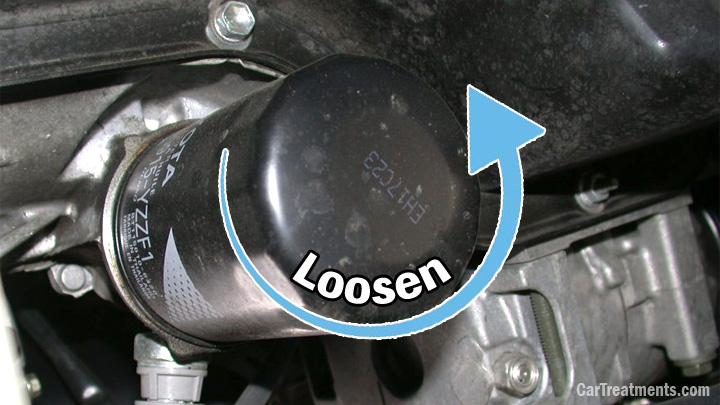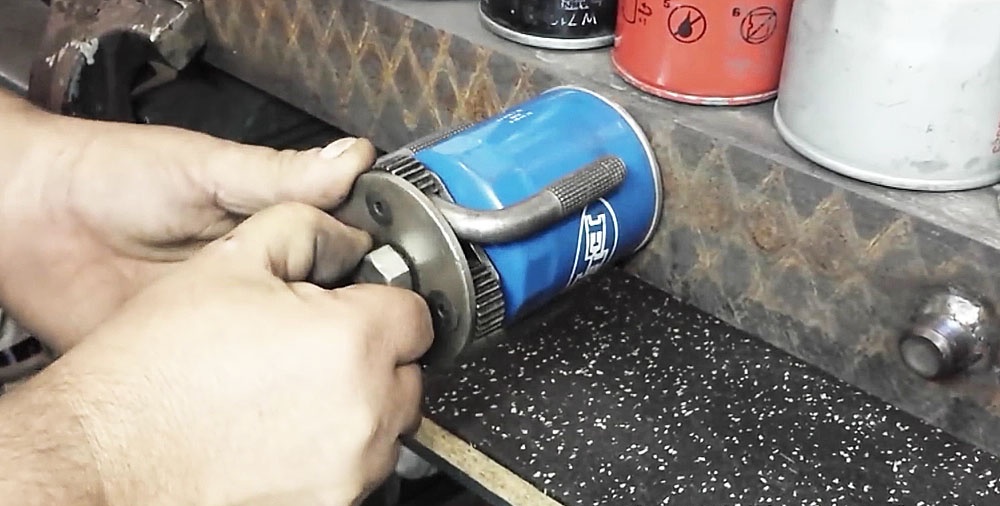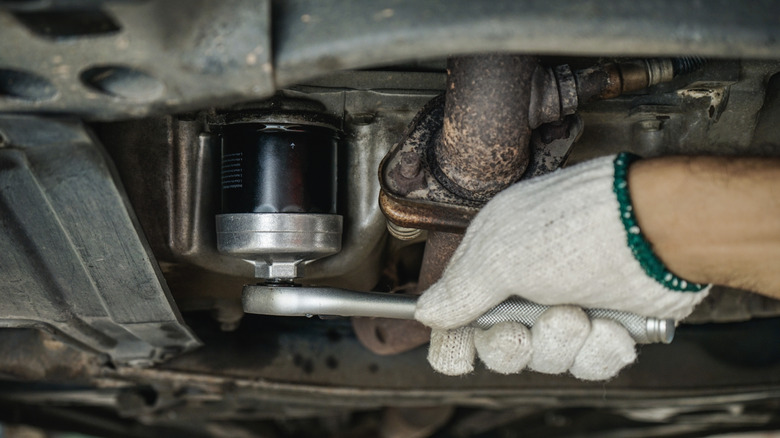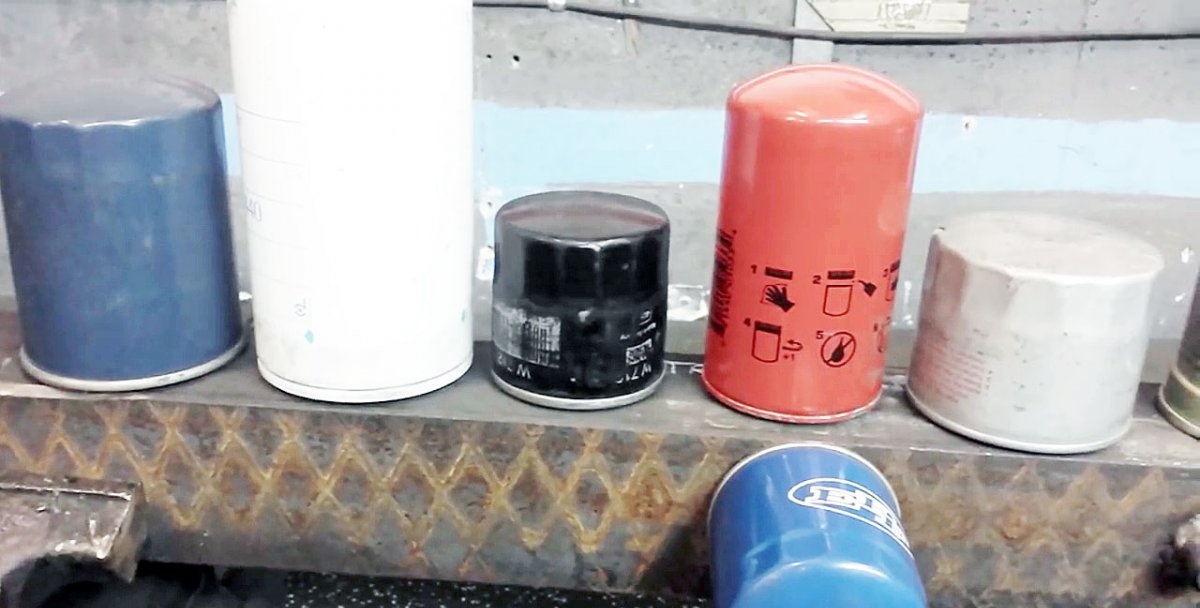Which Way To Unscrew Oil Filter

The deceptively simple task of changing an oil filter, a cornerstone of vehicle maintenance, often becomes a frustrating battle against stubborn metal. Many home mechanics and even seasoned professionals encounter unexpected resistance, leading to stripped housings, damaged filters, and delays. The direction one applies force – seemingly obvious – can be the key to a smooth or disastrous oil change.
This article delves into the physics, design nuances, and practical techniques surrounding oil filter removal, examining why conventional wisdom sometimes fails and how to ensure a successful outcome. We will explore the interplay of thread direction, engine heat, and filter installation practices that dictate the optimal approach, providing insights for both novice and experienced mechanics. Proper oil filter removal isn't merely about brute force; it's about understanding the system at play and applying the right knowledge.
Understanding the Basics: Righty-Tighty, Lefty-Loosey?
The universal mnemonic “righty-tighty, lefty-loosey” generally holds true for threaded fasteners. However, the world of automotive engineering, and particularly oil filters, presents exceptions. Understanding the default assumption is crucial, but recognizing potential variations is even more important.
Most oil filters adhere to the standard right-hand thread. This means that viewed head-on, turning the filter counter-clockwise (to the left) will loosen it, while turning it clockwise (to the right) will tighten it. This is the fundamental principle most mechanics learn and apply.
The Counter-Intuitive Reality: When Left is Right
While right-hand threads dominate, some vehicles, particularly those of European origin, may utilize oil filters with left-hand threads. This design choice is often implemented to prevent the filter from loosening due to engine vibration during operation.
Identifying a left-hand threaded filter often requires consulting the vehicle's service manual or specific online resources. Failing to recognize this critical difference can lead to immense frustration and potentially damage the filter housing. The manufacturer's specification is the definitive guide.
Factors Affecting Removal Direction
Several factors beyond thread direction influence the difficulty and necessary approach to oil filter removal. Consider the initial installation torque. Over-tightening, often performed during previous oil changes, makes subsequent removal exponentially harder.
Engine heat cycles, combined with time, cause the filter gasket to adhere to the engine block. This creates significant friction that opposes loosening. The gasket essentially becomes "glued" in place.
Corrosion and rust can further complicate matters, especially in older vehicles or those operating in harsh environments. These elements effectively weld the filter to the engine.
Tools and Techniques for Stubborn Filters
When facing a tightly secured oil filter, employing the correct tools is paramount. A basic oil filter wrench, often a band-style or claw-type, is a common starting point. These provide leverage to grip and turn the filter.
For particularly stubborn filters, specialized tools such as end-cap wrenches or chain-style wrenches may be necessary. End-cap wrenches fit snugly over the end of the filter, providing a more secure grip and reducing the risk of crushing or deforming it.
Penetrating oil can be helpful in dissolving corrosion and loosening the gasket seal. Apply it to the filter threads and gasket mating surface and allow time for it to penetrate before attempting removal.
A Note on Safety
Always allow the engine to cool before attempting an oil change. Hot oil can cause severe burns. Wear appropriate safety glasses to protect your eyes from splashing oil or debris.
Properly support the vehicle using jack stands before working underneath it. Never rely solely on a jack. Secure lifting practices are crucial for safety.
Preventive Measures: Ensuring Easy Removal Next Time
The best way to avoid future struggles with oil filter removal is to implement preventative measures during installation. Lightly lubricating the filter gasket with fresh oil before installation is crucial.
Tighten the filter to the manufacturer's specified torque. Over-tightening is a common mistake that leads to future removal difficulties. The correct torque value is usually printed on the filter itself.
Keep records of oil changes, including the type of filter used and any challenges encountered during the process. This information can be invaluable for future maintenance.
The Role of Vehicle Manufacturers and Mechanics
Vehicle manufacturers should clearly indicate the thread direction of the oil filter in the service manual. This seemingly small detail can save countless hours of frustration.
Professional mechanics have a responsibility to adhere to proper installation procedures and inform customers about any unusual filter characteristics. Transparency builds trust and prevents future issues.
Continued education and training are essential for mechanics to stay updated on best practices and emerging technologies in vehicle maintenance. Knowledge is the best defense against common pitfalls.
Looking Ahead: Future Trends in Oil Filter Design
Innovations in oil filter design are constantly evolving. Some manufacturers are exploring spin-on filters with improved grip surfaces or pre-lubricated gaskets. These features aim to simplify installation and removal.
Cartridge-style filters, housed within a reusable canister, are becoming increasingly common. While they eliminate the need to spin off the entire filter, they still require careful attention to sealing and torque specifications. Cartridge replacement is more common on newer vehicles.
Ultimately, the successful removal of an oil filter relies on a combination of knowledge, technique, and the right tools. By understanding the factors at play and adopting preventive measures, mechanics can transform this routine task from a source of frustration into a smooth and efficient process. Always check the specific vehicle's manual.





.jpeg)












